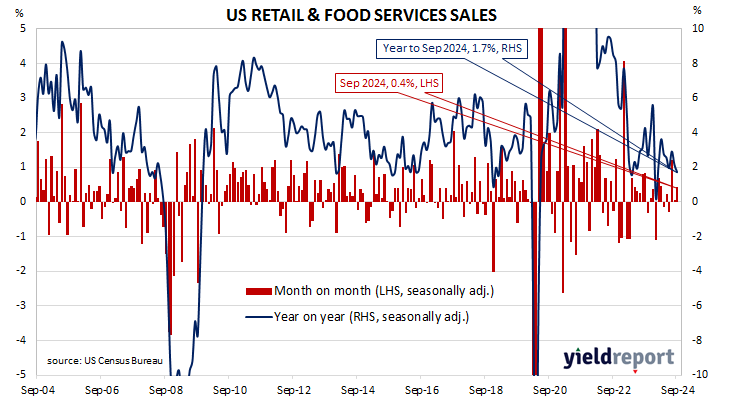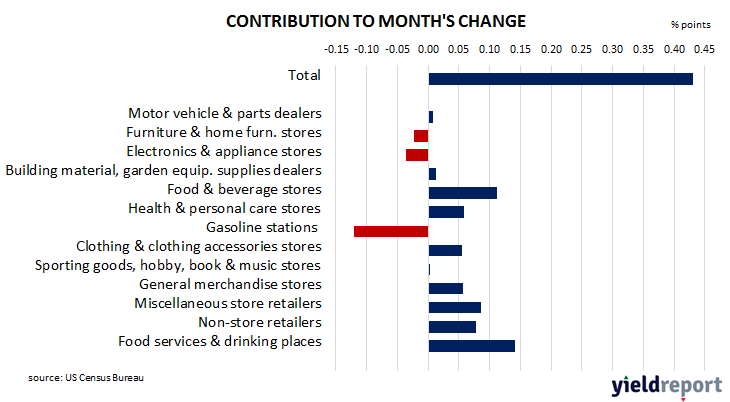Summary: US retail sales up 0.4% in December, less than expected; annual growth rate slows to 3.9%; ANZ: suggests strong growth in Q4; US Treasury yields fall; rate-cut expectations firm; higher sales in ten of thirteen categories; vehicle/parts sales largest single influence on month’s result.
US retail sales had been trending up since late 2015 but, commencing in late 2018, a series of weak or negative monthly results led to a drop-off in the annual growth rate below 2.0%. Growth rates then increased in trend terms through 2019 and into early 2020 until pandemic restrictions sent them into negative territory. A “v-shaped” recovery then took place which was followed by some short-term spikes as federal stimulus payments hit US households in 2021. However, growth rates have slowed significantly since mid-2022.
According to the latest “advance” numbers released by the US Census Bureau, total retail sales increased by 0.4% in December. The result was less than the 0.6% increase which had been generally expected as well as November’s 0.8% rise after revisions. On an annual basis, the growth rate slowed from November’s revised rate of 4.1% to 3.9%.
“While the rise in headline sales was lower than consensus expectations, control group sales [which are] used to impute real private consumption, rose at a faster than expected pace, up 0.7% month-on-month versus expectations of 0.4%,” said ANZ senior rate strategist Jack Chambers. “The data affirm that demand remained strong during the holiday season and suggests strong growth in Q4.”
US Treasury bond yields generally fell moderately across the curve on the day. By the close of business, 2-year and 10-year Treasury yields had both lost 3bps to 4.24% and 4.62% respectively while the 30-year yield finished 1bp lower at 4.86%.
In terms of US Fed policy, expectations of a lower federal funds rate in the next 12 months firmed a touch, with one 25bp cut and a good chance of another currently priced in. At the close of business, contracts implied the effective federal funds rate would average 4.325% in February, 4.295% in March and 4.25% in April. December contracts implied 3.92%, 41bps less than the current rate.
Ten of the thirteen categories recorded higher sales over the month. The “Motor vehicle & parts dealers” segment had the largest single influence on the overall result after it increased by 0.7% over the month and contributed 0.13 percentage points to the total.
The non-store segment includes vending machine sales, door-to-door sales and mail-order sales but nowadays this segment has become dominated by online sales. It accounts for around 17% of all US retail sales and it is the second-largest segment after vehicles and parts.



